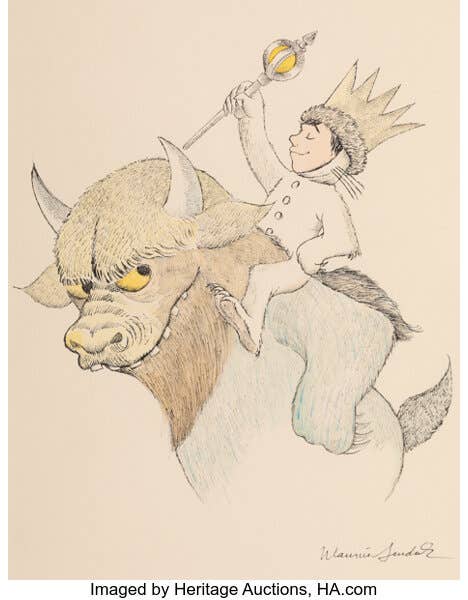Vintage Tupperware is making a comeback with collectors
Vintage Tupperware appeals to many Tupperware, the Central Florida-based brand of plastic products, comes with a lifetime guarantee against chipping, cracking or peeling – and it’s a good bet that…
Vintage Tupperware appeals to many
Tupperware, the Central Florida-based brand of plastic products, comes with a lifetime guarantee against chipping, cracking or peeling – and it’s a good bet that many kitchen cupboards worldwide contain at least one piece, some even 50 years old.
“My favorite Tupperware piece is flourier, a three-tier vintage Tupperware piece from the ’50s to store flour. The older vintage pieces have a crayon smell to them, but they are still so very functional,” said Wendy Spadero of California.
Other collectors like Joan Finten of Hudson, Ohio said she enjoys sharing her vintage Tupperware collection with her granddaughters. “I love my avocado green-colored Tupperware pickle jar for storing pickles and veggies,” said Finten. The vintage pickle jar can be purchased for $18 online. But Finten says her jar is not for sale.
Avid collectors say they marvel at the clean designs and functionality of Tupperware. Earl Tupper’s innovative method for molding plastic into clean, modern designs has landed vintage Tupperware in museums.
Shelley Nickles, curator of the division of home and community life at the Smithsonian’s National Museum of American History, said her favorite Tupperware piece is the innovative Wonder bowl for food storage from the early 1940s and 1950s. She also pointed out that another museum favorite is the less well-known Tupperware-related awards and incentives that were given to Tupperware dealers, such as the 1957 Jubilee Commemorative ceramic plate on exhibit.
“The extensive Smithsonian archival collections related to Tupperware helped researchers discover why the Wonder bowl and Tupperware became such an iconic part of consumer culture and the role of Tupperware home party executive Brownie Wise in its success,” said Nickles.
Tupperware: direct sales success
Tupperware’s sales method also made it an American icon in the 1950s and ’60s, when the home party was a feminine domain in a business world where most doors were shut to women. Brownie Wise, the queen of Tupperware in the 1950s, helped open those doors. Tupper invented the plastic containers with airtight lids modeled after paint cans, but Wise brought the product into American homes.
A single mom, Wise sold Stanley Home Products (shampoos, cleaners and other products) through home parties in Detroit before she began selling Tupperware in 1949. In 1950, she moved to Florida with her mother and son to help her son’s health. Tupperware wasn’t exactly flying off department store shelves, so when Wise contacted Tupper about a late order, he invited her to meet him and hired her immediately, impressed with her energy and creativity. The company was divided into two parts, the manufacturing division in New England and Tupperware Home Parties, led by Wise in Florida.
First housed in an airplane hangar in Orlando, Tupperware headquarters moved in 1953 to a thousand acres in Osceola County next to Gatorland.
According to Wise expert Bob Kealing, she had a vision for Central Florida, years ahead of Walt Disney. Wise “really struck on the idea of creating Orlando as a tourism destination … on this idea of Florida as this glamorous place,” Kealing writes in Life of the Party: The Remarkable Story of How Brownie Wise Built, and Lost a Tupperware Party Empire. Central Florida drew Tupperware salespeople for training and was home to the company’s Jubilee, an annual sales convention and celebration.
“Few products had such an enduring popularity and persistence in pop culture as Tupperware, the plastic storage containers introduced to American housewives as refrigerators became more common and more families moved to the suburbs,” said Kealing.
Tupperware inspires performance art
In fact, Tupperware has continued to be so popular that two new plays were staged in New York. “Sealed for Freshness,” about a Tupperware party gone awry, and “Dixie’s Tupperware Party,” a monologue by a drag queen – who in real life is a top Tupperware salesman – which played off broadway.
“People love Tupperware whether its vintage or modern,” said Kris Andersson, who runs “Dixie’s Tupperware Party” nationwide, a giddy comedy about Dixie Longate, an off-the-wall Tupperware lady who left her trailer and kids in Alabama so she could trek across America hawking the popular containers.
Dixie came into being when Andersson’s roommate hosted a Tupperware party at their Los Angeles home. A friend suggested that the actor start selling Tupperware himself; another friend dared him to do it in drag. Andersson accepted the challenge, borrowed a wig and boots and began his transformation into the energetic Tupperware saleswoman Dixie.
“It’s the wonderful people and heartwarming stories from Tupperware collectors that adds to my amazing sales journey,” said Andersson.
The Tupperware experience
Take, for example, Camela Lee’s story. Earlier this summer, Camela Lee had just finished furnishing her East Pittsburgh apartment – all she had left to do was hang the photos on the wall – when police told her she had to leave. By the next morning, a landslide had caused such severe damage to her building that it would have to be demolished within hours. There was no chance to salvage baby photos of her two children or her treasured awards she received for selling Tupperware.
“My most cherished Tupperware items come from the Welcome Ware series from the late 1940s. It all depends on what kind of vintage Tupperware you buy. For a small box you can pay $4, but for a bigger item that is rare, you can buy it for between $50 and $100,” said Monique Hageman of the Netherlands.
Tupperware selling successes
Ana McGowan, a star manager for Tupperware in the Pittsburgh area for the past 35 years, said her favorite vintage Tupperware item is the deviled egg keepers. They range in price from $10 to $15.
“I started selling Tupperware and going to Tupperware parties because I wanted a break from caring for my active 2-year-old,” said McGowan. She has won trips to Hawaii and New York with her Tupperware sales skills.
Meeting new people and making life-long friends is all part of the Tupperware experience, according to Jo Wilkens. Wilkens is a Tupperware manager in Pittsburgh’s East End.
“We have one Tupperware party a week or more,” she added. “Our group does a lot of multi-tasking like having bingo events with the Tupperware parties.”
Wilkens says some of her favorite vintage Tupperware items include the deviled egg keepers, salt and pepper shakers and the 26-cup biggest bowl that can cost about $40 online.
Tupperware changes with changing tastes
But no matter where or what product the Tupperware collector fancies, all collectors say it is the line’s history that makes it so fascinating to use.
Margie Crebs of Waynesburg, Pennsylvania, says most Tupperware fans recognize the products instantly, either by the shapes, which changed over the decades, or the colors, which also evolved. For instance, early bowl sets were round and made in pastel colors. As decorating color palettes changed, so did Tupperware.
In the late 1960s and ’70s, the company switched to earth tones. Some bowls became square rather than completely round.
All Tupperware is marked
“But if you’re learning about these varied products, which included food storage systems, serving pieces, mixing bowls and even hard plastic ovenware, just look at the bottom of a piece you suspect to be Tupperware,” said Crebs. “They are all marked with the brand name, so you’ll never confuse similar plastic storage containers and genuine Tupperware.”
Vintage plastics have become collectible because most baby-boomer collectors are nostalgic for their family’s old Tupperware. Every piece is clearly marked. Experts say the most common color is crystal, or white. Pink is difficult to find because it has faded through time.
Crebs points out that the pieces most in demand these days are a complete set of nesting bowls from the 1940s to the 1960s. As well as the 1960s sculptural salt and pepper shakers. “Tupperware will never go out of style.”
Chriss Swaney is a Pittsburgh-based freelance journalist for Reuters, The New York Times, Pittsburgh Engineer and Horse World, and an avid antique collector.








